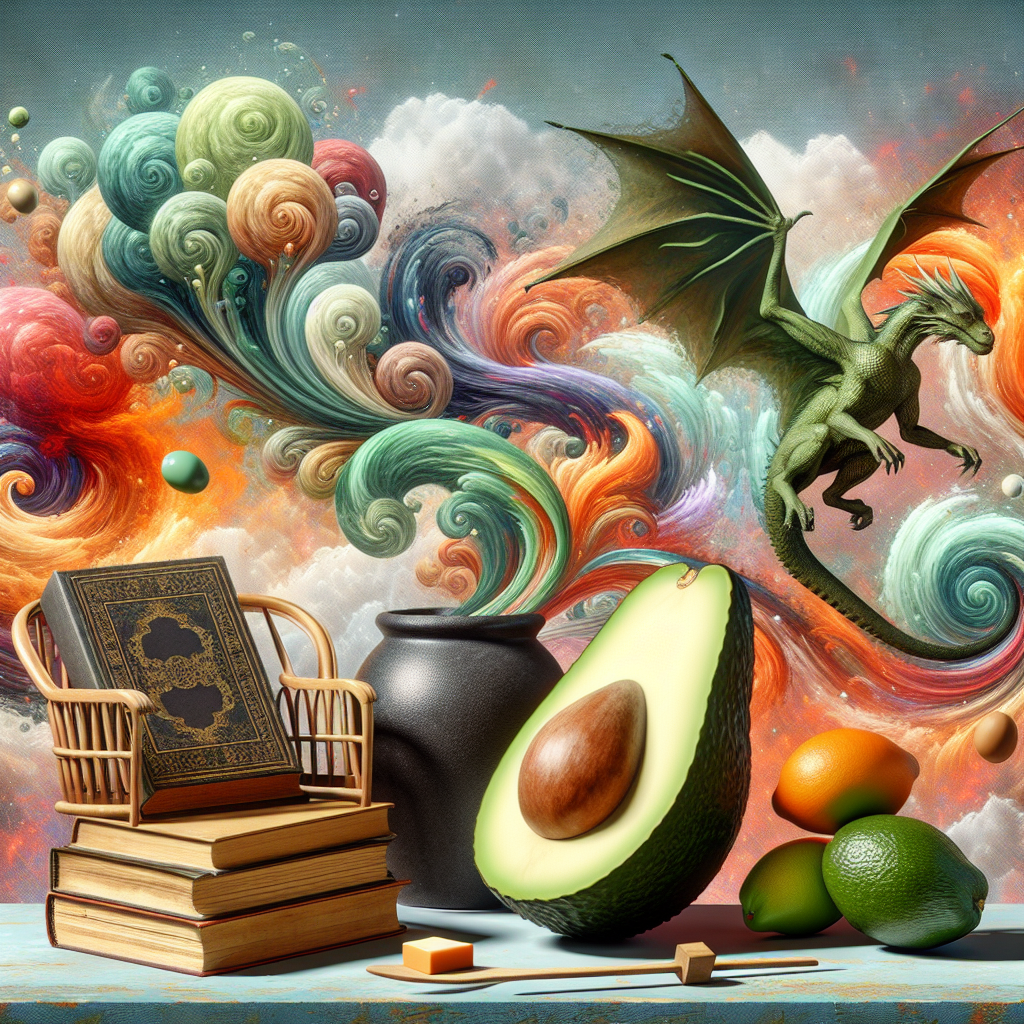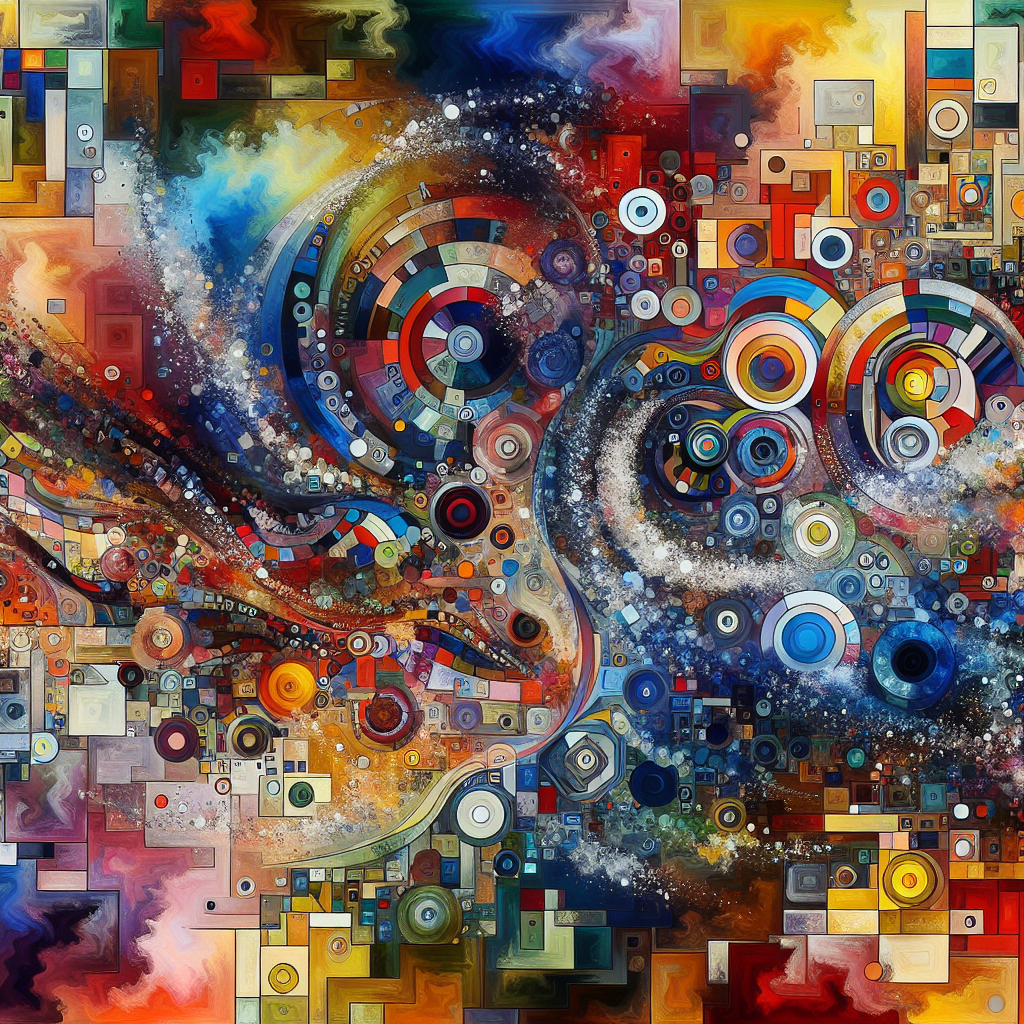As an alternative to reading the Dall-E 3 prompt guide we also have an AI Dall-E 3 Prompt Generator. It will take in a very basic description and write four different comprehensive and detailed versions of the prompt for you. It will also use Dall-E 3 to actually generate images for you based on the 4 prompts. Its one of many AI tools we have.

In the vast realm of Artificial Intelligence, one name has captured the imagination of developers, artists, and technophiles alike – DALL-E 3. Developed by OpenAI, this cutting-edge technology has redefined the boundaries of automated image generation with some truly breathtaking results.
One might wonder, what is it that makes DALL-E 3 so remarkable? Simply put, it boils down to its ability to generate unique, intricate images from textual prompts. This means you can feed in a descriptive or metaphorical phrase into DALL-E 3 and it will conjure an image that matches your words. As captivating as this sounds, the true prowess of DALL-E lies not just in understanding and interpreting these prompts but in the freedom it imparts to its users to shape surreal realms of their own.
This underlines the crux of our guide: Prompt Writing. The heart and soul of DALL-E’s image generation capabilities lie in the artful craft of writing prompts. Designing apt, effective prompts can unlock the full potential of DALL-E and enable you to tap into its creative best.
Why does prompt writing matter so much?
Think of prompts as instructions given to an artist. The more precise, clear, yet imaginative your instructions are, the better the artwork. Similarly, with DALL-E 3, your prompts guide the AI on what kind of image to generate. They form a dialog between you (the user) and DALL-E — communicating not just what you want to see visually but also encapsulating the nuances, emotions or concepts behind your vision.
Prompts play a critical role in ensuring that the output from DALL·E is not just visually appealing, but also contextually aligned to your initial idea. More than a simple input-output relationship, prompt writing with DALL-E 3 is a creative collaboration.
What to expect from this guide?
This comprehensive guide has been curated to assist both novices and experts on their journey of mastering prompts for DALL-E 3. Starting with the basic principles, we will walk you through the nuances of crafting perfect prompts that resonate with DALL-E’s capabilities. We will dissect successful prompts, glean insights from them and offer an in-depth understanding of how each element of these prompts works.
We’ll share time-tested tips and tricks, delve into advanced techniques and demonstrate how different prompts can yield varied results. In addition, we will discuss how to leverage the prowess of DALL-E for different tasks, be it in teaching environments or enhancing design projects. By the end of this guide, you’ll be well-equipped to create impactful prompts that truly bring out the best in DALL·E 3.
Breaking Down Successful Prompts
Let’s begin the exploration of effective prompt writing with a deep dive into some of the most successful prompts for DALL-E 3. To craft impactful instructions, it’s critical to understand what makes a good prompt. These examples have been handpicked from a host of resources, including ‘DALL-E prompting guide’, ‘best 30 DALLE-3 prompts’, and ’20+ DALL-E 3 Prompts’.

Example 1: “An armchair in the shape of an avocado”
This prompt resulted in DALL-E generating an image of a unique armchair designed like an avocado. The success of this prompt lies within its simplicity, yet distinctiveness. It marries two unrelated items (an armchair and an avocado) and asks DALL-E to combine them creatively. This approach invokes the AI’s potential for imaginative output while providing clear guidance.
Example 2: “A futuristic city skyline at dusk”
DALL-E interpreted this prompt by producing an array of futuristic skylines glowing under twilight skies. Here, the key is the adjective “futuristic”, instructing DALL-E to steer away from present-day architecture styles. Further, setting the scene “at dusk” adds another layer of depth, ensuring that lighting elements are factored into the generated image.
Example 3: “A steampunk dragon reading a book”
This prompt showcases how you can invoke specific genres or styles (in this case, “steampunk”) when giving instructions to DALL·E. By adding the action “reading a book,” it evokes a more complex image generation task – creating an active rather than static scene.
Key takeaways from successful prompts
Beyond the individual breakdown for each prompt, some overarching themes emerge from these insights:
- Clarity and Specificity: Clear instructions help to fine-tune the image generation output. For example, specifying a genre or style (like “futuristic” or “steampunk”) can drastically influence DALL-E’s interpretation of an object.
- Combine Unrelated Entities: Combining unrelated items appears to engage DALL-E’s ingenuity and results in more unique outputs. This opens up a new realm of possibilities, like turning everyday objects into something extraordinary.
- Engage with Adjectives and Actions: Supplementing your primary subject with attributes and verbs (such as “at dusk”, “reading a book”) helps creating more dynamic, immersive images.
To truly grasp these concepts, we encourage you to experiment with different styles of prompts. Note down the variations in the generated images while experimenting with clarity, complexity, or creativity within your prompts. In the next section, we will delve deeper into practical tips and tricks that will further aid you in crafting highly efficient prompts.
Tips and Tricks in Guiding DALL-E 3 Prompts

Having understood the basics and seen successful prompt examples, let’s now shift our focus to practical aspects which can significantly enhance your DALL-E 3 prompt writing skills. Aptly merging insights from ‘tips to get started with DALL-E 3,’ ‘how to write DALL-E prompts,’ and ‘DALL-E 3 prompts tips and tricks’, we present you some actionable strategies.
Keep it Simple
The old adage “less is more” certainly rings true when we talk about prompt engineering. It’s essential to remember that while DALL-E has shown impressive ability in understanding complex prompts, overly intricate or ambiguous phrases may lead to unanticipated results. Thus, start with simple, distinct instructions that clearly communicate your idea. For example, “A blue cat sitting on a green chair” offers a clear direction while still leaving room for AI’s creative interpretation.
Incorporate Adjectives
Adjectives play a crucial role in shaping the output of your prompts. By adding descriptive words, you introduce nuanced details that help refine the image generation process. Remember the magic of “futuristic” in our earlier “futuristic city skyline at dusk” example? It guided DALL-E into interpreting city skyline differently than it would have for a regular city skyline.
Use Analogies
DALL-E responds well to analogical thinking, i.e., describing something in terms of another thing. For instance, “An office building that looks like a sliced watermelon” will invoke DALL-E’s imaginative prowess to create an unusual but specific image based on this analogy.
Test and Refine
One size does not fit all in the world of prompt writing. The most effective way to find out whether your prompt works the way you intend is through testing and refining. Input your prompt, analyze the generated image, note down areas of mismatch, refine your instructions, and try again. This iterative process of refinement holds the key to mastering DALL-E 3 prompts.
Understand Common Pitfalls
Understanding common pitfalls is just as important as knowing best practices. For instance, avoid introducing multiple subjects in a single prompt as it can confuse DALL-E. If you need an image with various elements, it’s better to create a clear hierarchy within your prompt by specifying which subject is primary, secondary and so on.
Also remember that while DALL-E’s ability to interpret metaphors is impressive, overly abstract or philosophical prompts might result in unexpected outputs, sometimes even zero images. Therefore it’s advisable to balance creativity with concreteness when crafting prompts.
Gaining proficiency in prompt writing is more art than science. It demands practice, patience and an open mind to experiment confidently and learn from every output. As we progress further into this guide, we will take you through advanced prompting techniques and some specific use cases where aptly crafted DALL-E 3 prompts can make a remarkable difference.
Delving Deeper Into Advanced Prompt Crafting
Now that you’ve equipped yourself with the basics of prompt writing for DALL-E 3 and understood some common best practices, let’s take a step further. This section is dedicated to those who wish to explore advanced techniques inspired by teachings on ‘prompt engineering with DALL-E 3’ and ‘writing perfect mid-journey prompts with DALL·E 3’.
Prompt Stacking
Prompt stacking is an excellent strategy when you want your generated image to abide by several properties concurrently. In this approach, you write multiple standalone prompts and tell DALL-E to generate an image that fulfills all these conditions simultaneously!
For example, if you want an image of a robot that looks like a knight riding a mechanical dragon in the moonlight, stack prompts as follows: “A robot”, “resembling a knight”, “riding a dragon”, “a mechanical dragon”, “in the moonlight”. This stacked prompt instructs DALL-E to generate an image that fits all the given conditions, enhancing its specificity and creativity.
Making Use of Iterative Prompting
Iterative prompting can be used to give DALL-E real-time modifications for the prompted scenario. Here’s how it works: Once an initial prompt has been processed and an image has been produced, instead of providing a completely new desired outcome or modification, simply add on to your original prompt with additional details or changes.
This strategy allows DALL-E 3 to keep the context of your original vision while refining or altering specific aspects based on supplemental instructions. For example, if the initial prompt was “A fairy garden at sunrise”, but upon receiving the result you wanted more flowers, your iterative prompt could be “A fairy garden at sunrise with more colorful flowers”.
Working with Subtractive Prompts
In scenarios where DALL-E generates an image that’s nearly perfect, but has one or two unwanted elements, you can use subtractive prompts. As the name suggests, these prompts are meant to subtract or remove certain aspects from the initially generated image.
For instance, let’s say you prompted DALL-E with “A unicorn in a snow-covered forest” and it produced a beautiful image leaning towards your vision but there’s a rainbow that doesn’t fit into your winter theme. Here, your subtractive prompt would be something like “A unicorn in a snow-covered forest without any rainbows”. This way, you communicate your exact expectations to DALL-E without having to start from scratch.
Experimenting with Meta-Prompts
A meta-prompt is essentially a prompt about writing another prompt. It’s a higher-order instruction to guide how DALL-E should structure your actual prompt. For example, “Write a prompt requesting an imagery of an enchanting elvish kingdom bathed in twilight”, will have DALL-E craft its creative touch into your input before generating the final image.
To remember when using meta-prompts: Your request should be distinctly phrased so that DALL-E recognizes it as one single task – ‘writing another prompt’. Otherwise, it might directly output an image instead of giving you an intermediate prompt.
The techniques covered here represent some of the more advanced strategies for creating effective prompts and should give your interaction with DALL·E much depth and specificity. While they definitely require practice and fine-tuning to master, their potential payoff in terms of added control and precision can make this investment worthwhile!
Up next, we will discuss different scenarios where aptly crafted prompts can be used to accomplish specific goals, such as teaching or enhancing design projects!
Utilizing DALL-E 3 for Various Goal-oriented Tasks

In this part of the dall-e 3 prompts guide we look ideal prompts for different use cases.
DALL-E 3’s prowess reaches far beyond simple image creation. The AI’s ability to generate unique and highly specific images can be leveraged for a multitude of tasks and scenarios, including academic teaching or enhancing design projects. Understanding how to craft purposeful prompts that align with your specific objective will allow you to fully tap into DALL-E’s potential. Let’s dive into some of these use-cases:
Teaching with DALL-E 3
Prompting skills can prove immensely useful in an educational setting. Concepts which might otherwise be abstract or complex can be made more tangible and comprehensible through the visual representation capabilities of DALL-E.
A well-crafted prompt such as “The lifecycle of a butterfly shown in four stages” or “An illustration of Pythagorean theorem” would result in visually impactful images that can aid comprehension and retention.
DALL-E also possesses the capability to depict historical events or make fictional narratives come alive. For instance, prompts like “A bustling marketplace in ancient Rome at midday”, or “Characters from ‘The Lion, The Witch and The Wardrobe’ exploring Narnia” could provide rich, vivid illustrations to accompany lesson plans or storybooks.
Elevating Design Projects
In the domain of design, DALL-E 3 opens up a new world of creative possibilities. By generating unique imagery based on bespoke prompts, you have an unlimited source of inspiration at your fingertips.
Prompts designed to elicit specific aesthetics (“Art Nouveau inspired poster for a jazz concert”), emotions (“Logo depicting strength and resilience”), or even metaphorical concepts (“An icon symbolising continuous growth”) can yield designs that are truly one of a kind. It’s like having an on-demand artist who can intuitively translate your ideas into visually stunning portrayals.
Prompt-engineering for specific design projects may require a good grasp of iterative and subtractive prompts, as you fine-tune the generated output to align precisely with your vision. Over time, your interaction with DALL-E 3 can evolve to function much like a creative brainstorming session, where back-and-forth iterations lead to refined, impactful designs.
Creating Interactive Experiences
Another exciting use-case for intentionally crafted DALL-E 3 prompts lies in creating interactive experiences such as story-telling or game development. By sequentially crafting and feeding prompts based on user’s choices or storyline progression, DALL-E can generate corresponding imagery that dynamically enhances the user experience.
For instance, consider a fantasy adventure game where the player has just decided to explore a dark forest. A prompt such as “A menacing, shadowy forest path veiled by moonlight” could set the visual tone for their next move.
The same concept applies beautifully to interactive storytelling or narrated virtual tours where each new turn or narrative twist can be enhanced by a captivating, contextually appropriate image crafted in real-time by DALL-E 3.
In all these scenarios, it’s evident that Dall-E 3’s true power unlocks when you master the art of prompt crafting tailored to your specific goals. As we conclude our guide in the upcoming sections, we’ll ensure to leave you with resources and tips that would continuously aid you in refining this very proficiency.
Final Thoughts – Path to Expertise
Congratulations! You have now reached the end of our dall-e 3 prompts guide to writing perfect, impactful DALL-E 3 prompts. We hope this journey has equipped you with the knowledge and techniques necessary to unlock the full potential of DALL-E’s image generation capabilities.
Continuous Practice and Refinement
As with any skill, practice is key to mastering prompt writing with DALL-E 3. The more you experiment with different styles, techniques, and combinations of prompts, the better you will become at crafting highly efficient instructions that yield the desired results.
We encourage you to continue exploring the world of prompt engineering by joining online communities like OpenAI’s official website or specific Reddit threads dedicated to discussing DALL-E applications. Engaging with fellow enthusiasts will not only provide you with valuable insights but also offer a platform for sharing and refining your ideas.
Resources for Further Development
If you’re looking for additional resources to further enhance your prompt writing skills, consider exploring books such as “The DALL-E 2 Prompt Book.” These resources often provide expert guidance, real-world examples, and practical exercises that can help sharpen your abilities.
Additionally, OpenAI’s website offers regular updates on new features, enhancements, and research related to DALL-E. Staying updated with the latest developments in AI-generated imagery can provide you with fresh perspectives and inspire new avenues of exploration.
Explore and Experiment
Remember that prompt writing with DALL-E 3 is an art form that allows you to unleash your creativity. Don’t be afraid to push the boundaries, think outside the box, and experiment with unconventional prompts. The beauty of working with AI is that it often surprises us with unexpected but visually stunning outcomes.
A Call to Action
Now armed with a wealth of knowledge on prompt writing for DALL-E 3, we encourage you to embark on your own creative journey. Take what you’ve learned from this guide and apply it in your personal projects, whether they involve teaching, design, storytelling, or other imaginative endeavors.
Remember that expertise in prompt writing is built through continuous learning and hands-on experience. Embrace challenges, learn from each output generated by DALL·E, and refine your skills along the way. With time and practice, you’ll develop a unique style that brings out the best in DALL-E’s imaginative output.
Thank you for joining us on this exciting adventure into the fascinating world of DALL-E 3 prompts. We can’t wait to see what incredible creations you’ll generate!